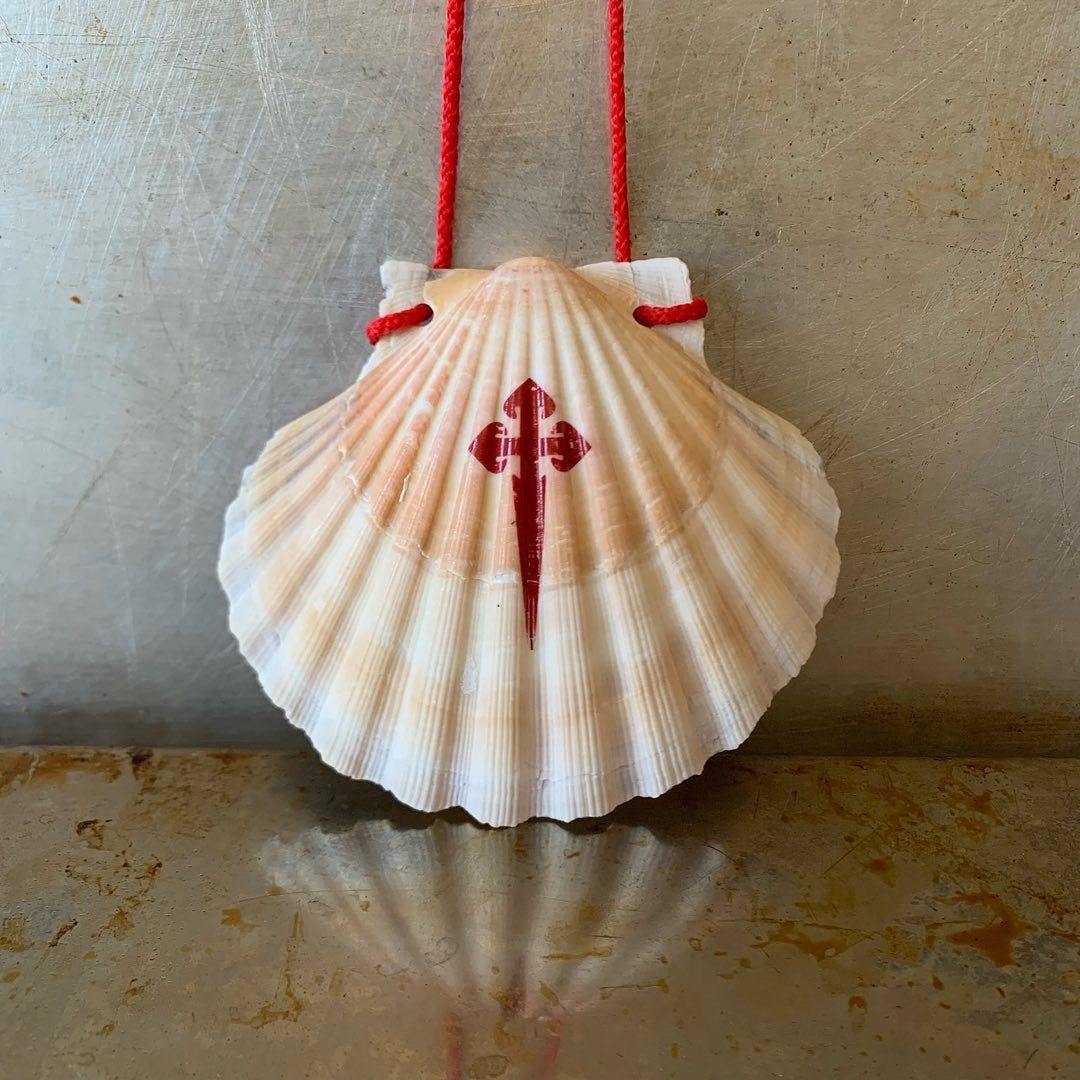THE SCALLOP SHELL
“...the ridged lines on the shell converge at its tip just as pilgrims converge on Santiago de Compostela after traveling from their homes around the world.”
In 2006, after retiring from academic careers at the University of Washington, my parents walked the Camino de Santiago, an ancient Christian pilgrimage route across northern Spain. For six weeks they walked, eating in small cafes, sleeping in albergues and making friends with other pilgrims. Back home in Seattle, they joined the local Camino group, and my father gave presentations at churches and community centers. In the summers, they often volunteered at the albergue in Carrión de los Condes.
When the pandemic began, my wife, Arline, and I spent many evenings on my parents’ deck drinking wine and listening over and over to the stories of the people they’d met on their journey: the Irish nuns, the gay flight attendants from Amsterdam, and Antonio, the cafe proprietor who unexpectedly invited my father to help him make the day’s tapas.
After months together in our pandemic pod, the stories became tiresome, but my father was so animated when he told them, and there was so little joy in our restricted lives, that Arline always prompted him to tell them again. “When the pandemic is over,” she’d say, “we’ll all go to Spain and do the Camino together.” We would raise our glasses: ¡Buen Camino!
And then my father died of a massive stroke. My mother moved into a retirement home, and I began cleaning out the house they had lived in for more than 40 years. People told me about services that would empty houses, and friends and family offered to help, but I needed to touch and hold and consider each object. I found my father’s Boy Scout uniform, his childhood report cards, his tapas cookbooks. I found the scallop shell he had tied to his backpack on the walk.
A symbol of the Camino, the scallop shell is painted on walls, embedded in sidewalks, and worn by pilgrims along the route. As the story goes, the ridged lines on the shell converge at its tip just as pilgrims converge on Santiago de Compostela after traveling from their homes around the world.
The day my parents walked the last miles toward Santiago, it rained for hours. Tired and wet, they were exhilarated to see the cathedral. They entered to perform the final rituals of the pilgrimage. They touched the pillar of St. James, stroking the soft indentations where centuries of pilgrims before them had placed their hands. They descended to the crypt to view the silver casket where the apostle’s remains are said to be kept.
My father’s remains are kept in a niche in St. Mark’s Episcopal Cathedral, in Seattle. During Holy Week almost a year after his death, my mother and I went to a service in the columbarium and saw his name on the niche for the first time. My mother took communion. I touched the letters of his name.
I don’t know why my father needed a spiritual journey or why he needed that specific one, but I know that what made it meaningful were the people he met and the sense of a communal experience. I’m glad we spent the last year of his life, while the pandemic kept so many of us apart, listening to his stories about it and sharing his wine. Buen Camino, Dad.
—Allison Green
Allison Green writes and teaches writing in Seattle.




